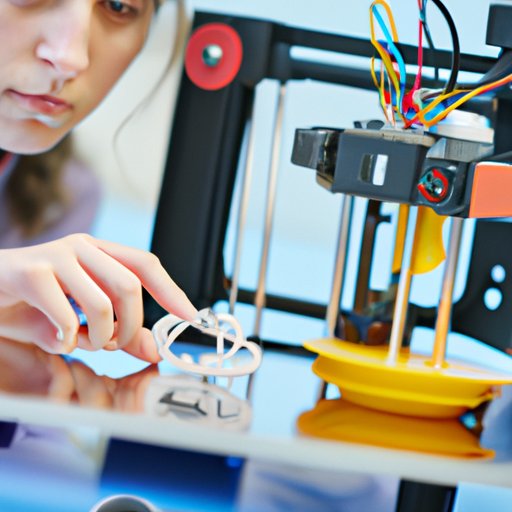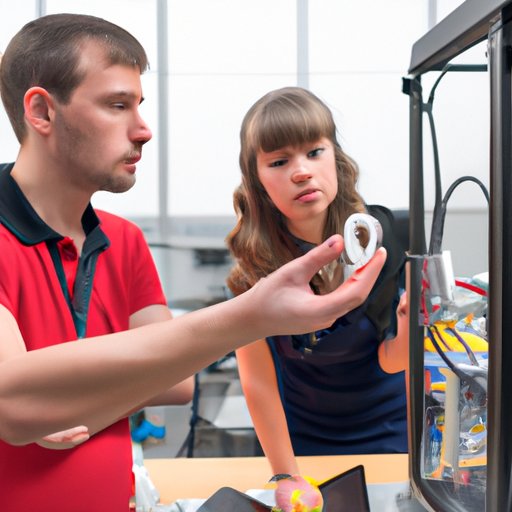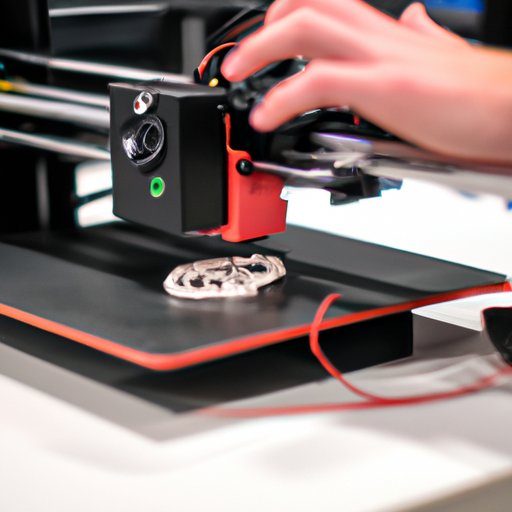Introduction
3D printing is a manufacturing process that creates three-dimensional objects from digital models. It has become increasingly popular in recent years due to its ability to quickly and accurately create complex shapes with minimal material waste. In this article, we’ll explore how 3D printing works, looking at the components, types of technology, and steps involved in the process as well as the many benefits it offers.

Examining the Components of 3D Printing
At its core, 3D printing involves three main components: printer hardware, computer-aided design (CAD) software, and filament materials. The printer hardware is responsible for producing the physical object, either by depositing material layer by layer or by selectively melting powder particles. CAD software is used to create a digital model of the desired object. Finally, filament materials provide the raw material for the printer to work with, such as plastic, metal, or ceramic.
Exploring the Different Types of 3D Printing Technology
There are several different types of 3D printing technology available, each of which uses different methods to produce the desired object. Fused deposition modeling (FDM), for example, uses a heated nozzle to extrude molten plastic onto a platform, gradually building up the object layer by layer. Selective laser sintering (SLS) uses a high-powered laser to melt and fuse together powder particles into a solid shape. Stereolithography (SLA) uses a laser to cure liquid resin into a solid form.

Explaining the Steps Involved in 3D Printing Processes
The 3D printing process typically involves four main steps: designing a model in CAD software, preparing the model for printing, loading the filament material into the printer, and printing the model layer by layer. The first step involves creating a 3D model of the desired object using specialized CAD software. This model is then prepared for printing by breaking it down into layers and generating instructions for the printer. Once the model is ready, the filament material is loaded into the printer and the printing process begins. The printer then builds the object layer by layer until the desired object is complete.

Understanding the Benefits of 3D Printing
3D printing offers many advantages over traditional manufacturing methods. One of the most significant benefits is cost savings. Because 3D printing eliminates the need for expensive tooling and molds, it can significantly reduce the cost of production. Additionally, 3D printing has a much faster production time than traditional methods, allowing for quicker turnaround times. Finally, 3D printing offers increased accuracy and detail, allowing for more intricate designs and smoother finishes.
Analyzing Specific Applications for 3D Printing Technology
3D printing technology is being used in a variety of industries for a range of applications. Rapid prototyping, for instance, is a popular use of 3D printing. Companies can quickly produce prototypes to test out new designs without having to go through the costly and time-consuming process of traditional manufacturing. Customized manufacturing is another application of 3D printing, allowing companies to produce custom parts on demand. Finally, 3D printing is also being used in the medical field for the development of medical devices such as prosthetics and implants.
Conclusion
3D printing is a powerful manufacturing technology that offers a wide range of benefits. By understanding the components, types of technology, and steps involved in the process, it’s easy to see why 3D printing is becoming increasingly popular. From rapid prototyping to customized manufacturing and medical device development, 3D printing is revolutionizing the way products are made.
(Note: Is this article not meeting your expectations? Do you have knowledge or insights to share? Unlock new opportunities and expand your reach by joining our authors team. Click Registration to join us and share your expertise with our readers.)
